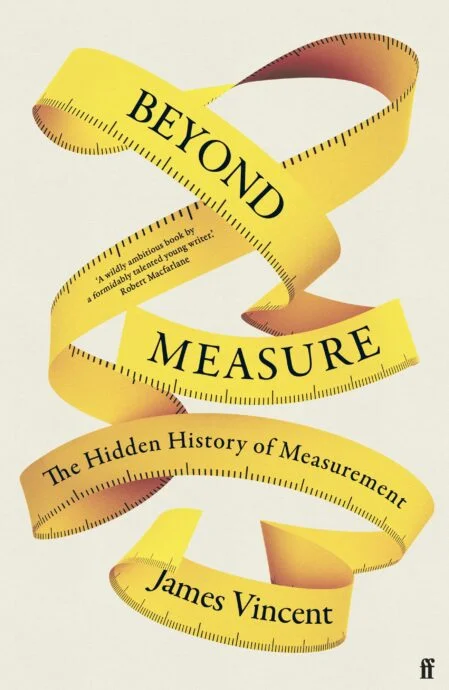Beyond Measure: The Hidden History of Measurement
Author: James Vincent
Publisher: Faber and Faber
ISBN: 978-0-571-35421-4
In 2022, then-government minister Jacob Rees-Mogg proposed that Britain should return to imperial measurements – pounds, ounces, yay Brexit! This was a ship that had long since sailed; 40-something friends learned only the metric system at school. Even those old enough to remember imperial measures had little nostalgia for them.
As James Vincent explains in Beyond Measure: The Hidden History of Measurement, and as most of us assume instinctively, measuring physical objects began with comparisons to pieces of the human body: feet, hands, cubits (elbow to fingertip), fathoms (the span of outstretched arms). Other forms of measurement were functional, such as the Irish collop, the amount of land needed to graze one cow. Such imprecise measurements had their benefits, such as convenient availability and immediately understandable context-based value.
Quickly, though, the desire to trade led to the need for consistency, which in turn fed the emergence of centralized state power. The growth of science increased the pressure for more and more consistent and precise measurements – Vincent spends a chapter on the surprisingly difficult quest to pin down a number we now learn as children: the temperature at which water boils. Perversely, though, each new generation of more precise measurement reveals new errors that require even more precise measurement to correct.
The history of measurement is also the history of power. Surveying the land enabled governments to decide its ownership; the world-changing discovery of statistics and the understanding they brought of social trends, and the resulting empowerment of governments, which could afford to amass the biggest avalanches of numbers.
Perhaps the quirkiest and most unexpected material is Vincent’s chapter on Standard Reference Materials. At the US National Institute for Standards and Measurement, Vincent finds carefully studied jars of peanut butter and powdered radioactive human lung. These, it turns out, provide standards against which manufacturers can check their products.
Often, Vincent observes, changes in measurement systems accompany moments of social disruption. The metric system, for example, was born in France at the time of the revolution. Defining units of measurement in terms of official weights and measures made standards egalitarian rather than dependent on one man’s body parts. By 2018, when Vincent visits the official kilo weight and meter stick in Paris, however, even that seemed too elite. Today, both kilogram and meter are defined in terms of constants of nature – the meter, for example, is defined as the distance light travels in 1/299,792,458th of a second (itself now defined in terms of the decay of caesium-133). These are units that anyone with appropriate equipment can derive at any time without needing to check it against a single stick in a vault. Still elite, but a much larger elite.
But still French, which may form part of Rees-Mogg’s objection to it. And, possibly, as Vincent finds some US Republicans have complained, *communist* because of its global adoption. Nonetheless, and despite anti-metric sentiments expressed even by futurists like Stewart Brand, the US is still more metric than most people think. The road system’s miles and retail stores’ pounds and ounces are mostly a veneer; underneath, industry and science have voted for global compatibility – and the federal government has, since 1893, defined feet and inches by metric units.
